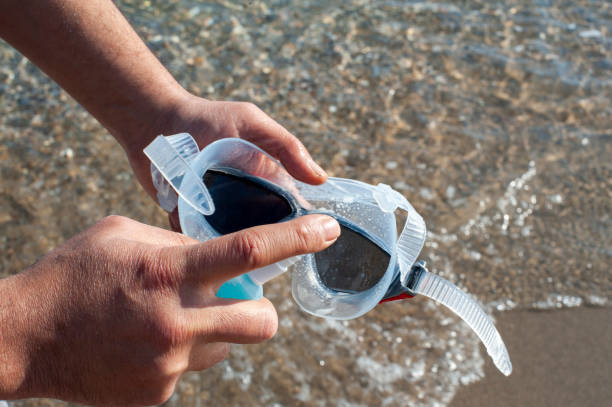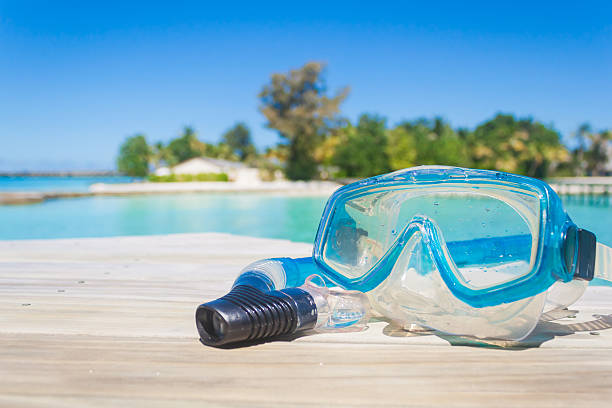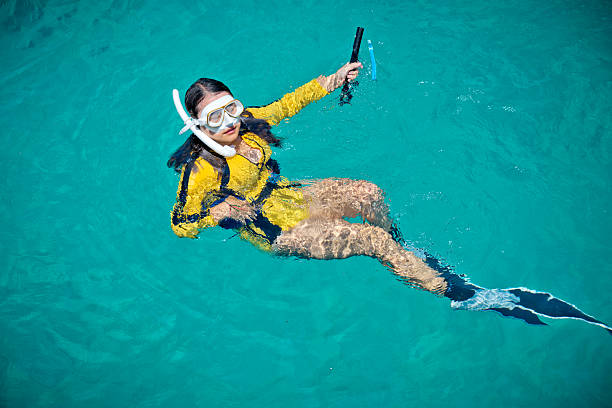La natación es una actividad atemporal que disfrutan personas de todas las edades y niveles de condición física. Tanto si eres principiante como si eres un nadador experimentado, sumergirte en una piscina o deslizarte por aguas abiertas puede ser estimulante y beneficioso para tu salud y bienestar general. En esta guía completa, profundizaremos en los diversos aspectos de la natación, desde sus beneficios para la salud hasta los diferentes estilos de natación, el equipo y el material, una guía paso a paso sobre cómo nadar e importantes precauciones y consejos de seguridad a tener en cuenta. ¡Comencemos!
Beneficios de la natación para la salud
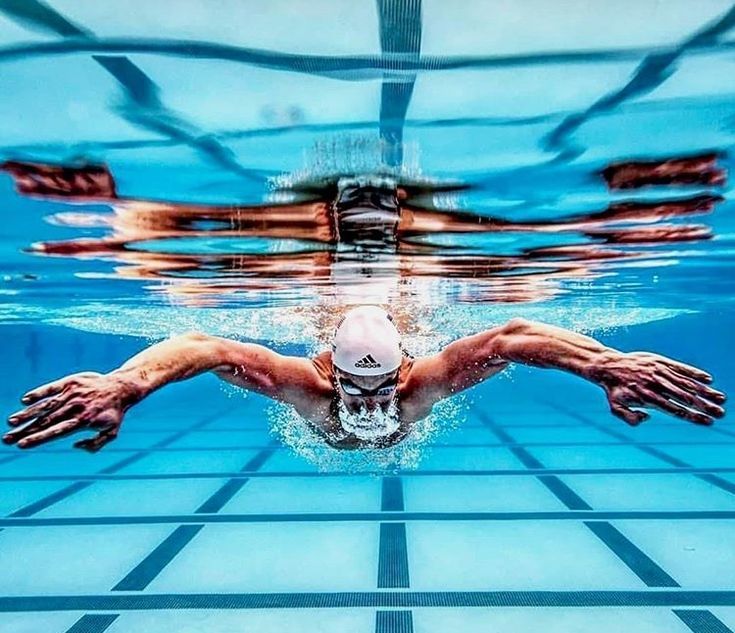
fuente: pinterest
La natación es reconocida como una actividad física de bajo impacto, así que ¿qué hace la natación por tu cuerpo?
Ejercicio cardiovascular de bajo impacto
La natación ofrece un entrenamiento cardiovascular de bajo impacto que es suave para las articulaciones, lo que la convierte en un ejercicio ideal para personas con afecciones como artritis o que se recuperan de lesiones. La flotabilidad del agua reduce la tensión en el cuerpo, permitiéndote moverte con libertad y sin dolor, a la vez que elevas tu frecuencia cardíaca. Los movimientos rítmicos continuos de la natación activan el sistema cardiovascular, mejorando tu salud cardiovascular en general.
Entrenamiento de cuerpo completo
Uno de los beneficios más notables de la natación es que involucra múltiples grupos musculares simultáneamente, lo que proporciona un entrenamiento completo para el cuerpo. Ya sea que practiques estilo libre o estilo mariposa, tus brazos, piernas, torso y espalda participan activamente en tu impulso a través del agua. Este entrenamiento integral no solo fortalece y tonifica tus músculos, sino que también mejora tu resistencia y aguante general.
Mejora la flexibilidad y el tono muscular
La resistencia del agua al nadar permite una mayor amplitud de movimiento y flexibilidad en comparación con los ejercicios realizados en tierra. Al desplazarse por el agua, los músculos se estiran y contraen, lo que promueve la flexibilidad y aumenta la amplitud de movimiento. Además, el movimiento constante al nadar ayuda a tonificar y fortalecer los músculos, lo que proporciona un físico esbelto y definido.
Pérdida y mantenimiento de peso
La natación puede ser una herramienta eficaz para perder y mantener un peso saludable. Gracias a su alto poder quemagrasas, la natación ayuda a quemar una cantidad significativa de calorías en poco tiempo. La resistencia del agua también aumenta la intensidad del entrenamiento, permitiéndote quemar esas calorías extra mientras tonificas tus músculos. Las sesiones regulares de natación, combinadas con una dieta equilibrada, pueden contribuir a lograr y mantener un peso saludable.
Alivio del estrés y bienestar mental
Nadar no es solo una actividad física, sino también una forma de atención plena. Los movimientos repetitivos y rítmicos en el agua pueden tener un efecto calmante en la mente, reduciendo los niveles de estrés y ansiedad. La flotabilidad del agua también puede proporcionar una sensación de ingravidez, aliviando la tensión mental y física. Además, nadar libera endorfinas, hormonas naturales que mejoran el estado de ánimo y promueven un bienestar general.
4 tipos de estilos de natación
La natación abarca varios estilos, cada uno con sus propias características y técnicas. A continuación, se presentan cuatro tipos de natación:
Estilo libre
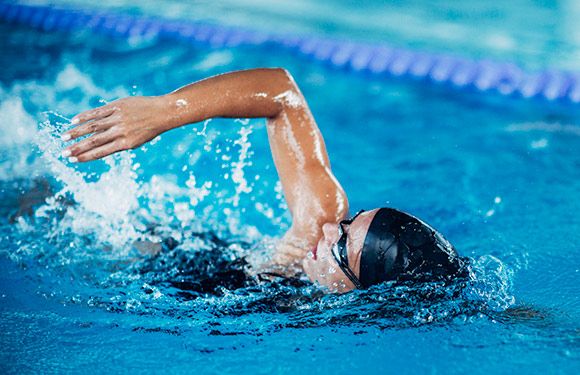
fuente: pinterest
El estilo libre, también conocido como crol, es quizás el El estilo de natación más común y eficienteImplica un movimiento continuo de brazos alternados, combinado con una patada de aleteo, que impulsa al nadador hacia adelante con rapidez y suavidad. El estilo libre enfatiza las técnicas de respiración adecuadas, generalmente girando la cabeza hacia un lado durante la fase de recuperación del brazo para inhalar. Además, es crucial mantener una posición corporal estilizada, ya que reduce la resistencia y permite un deslizamiento eficiente en el agua. Su eficiencia y velocidad lo convierten en el estilo preferido en competiciones de natación, triatlones y natación deportiva. Su versatilidad también lo convierte en un estilo excelente para nadadores de todos los niveles.
Braza de pecho
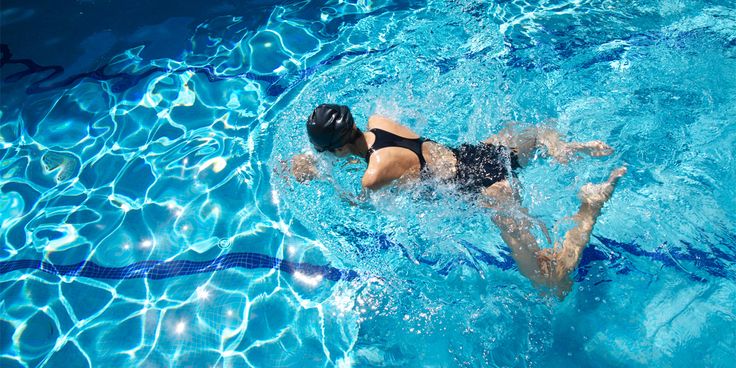
fuente: pinterest
La braza es reconocida por su estilo elegante y pausado. Esta brazada combina un movimiento simultáneo de brazos con una patada de rana, lo que la distingue de otras brazadas. Al realizar un movimiento amplio con los brazos, con las palmas hacia afuera, las piernas realizan una patada distintiva: extienden las piernas hacia afuera y luego flexionan las rodillas para juntar los pies. Este movimiento sincronizado proporciona una propulsión constante en el agua. Su ritmo pausado la hace popular entre nadadores recreativos y quienes buscan una experiencia de natación relajada, priorizando el disfrute y la comodidad en el agua sobre la velocidad y la intensidad.
Revés
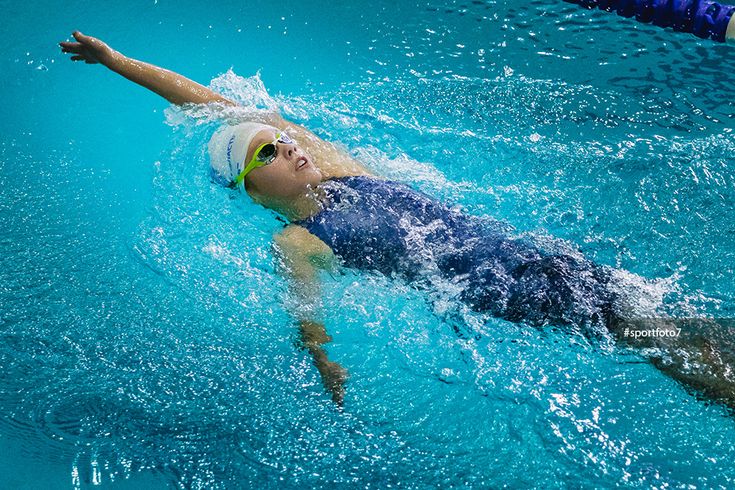
fuente: pinterest
Como sugiere el nombre, la espalda es realizado mientras está acostado boca arribaCon la cara y el cuerpo hacia arriba. Este estilo de natación se caracteriza por un movimiento continuo de brazos alternados y una patada similar a la del estilo libre, lo que permite la propulsión en el agua. Lo que distingue a la espalda es su naturaleza relajante y tranquilizadora; los nadadores flotan sin esfuerzo sobre la espalda, contemplando el cielo o el techo mientras se desplazan con fluidez por el agua. Esta brazada permite una experiencia de natación tranquila, fomentando una sensación de calma y comodidad, ya que el cuerpo se mantiene flotando y con soporte durante todo el nado.
Trazo de mariposa
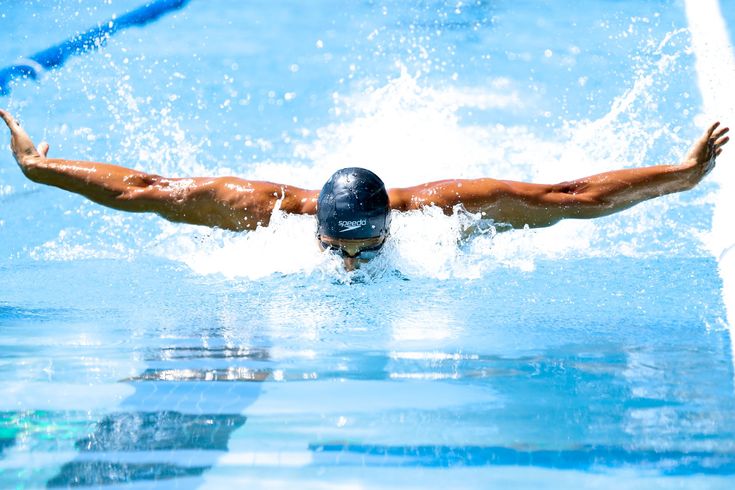
fuente: pinterest
La brazada de mariposa es reconocida como una de las La natación más exigente pero visualmente cautivadora Técnicas. Consiste en una patada de delfín simultánea y ambos brazos se mueven al unísono en un movimiento de recuperación sobre el agua. Esta brazada exige una fuerza considerable en la parte superior del cuerpo y una coordinación precisa para lograr su característico movimiento ondulante en el agua. La elegante ejecución de la mariposa requiere que los nadadores sincronicen patadas potentes con brazadas enérgicas, creando una propulsión fluida y dinámica. Esta desafiante brazada suele ser la preferida por los nadadores de competición por su eficiencia en velocidad y su impactante apariencia durante las carreras y las competiciones.
Equipo y material de natación
Para mejorar su experiencia y rendimiento en la natación, aquí hay algunos consejos esenciales: equipo y material de natación Deberías considerar:
Trajes de baño

Trajes de baño Son prendas diseñadas específicamente para natación y actividades acuáticas. Ofrecen comodidad, flexibilidad y sujeción, permitiendo a los nadadores moverse libremente en el agua. Fabricados con materiales resistentes al cloro y de secado rápido, los trajes de baño vienen en varios estilos para adaptarse a diferentes preferencias y actividades.
Beneficios de los trajes de baño:
Los trajes de baño ofrecen un ajuste estilizado que reduce la resistencia, mejorando la eficiencia al nadar. Proporcionan la sujeción y la cobertura necesarias, lo que aumenta la confianza y el rendimiento. Los materiales duraderos y de secado rápido resisten los daños del cloro y el agua salada, lo que garantiza durabilidad y comodidad durante un uso prolongado.
Tipos y usuarios:
- Trajes de baño de una pieza: Nadadores de competición, preferencias de modestia.
- Bikinis: Natación recreativa, tomar el sol.
- Bañador/shorts de tabla: Hombres, comodidad, versatilidad.
- Camisetas antierupciones: Surfistas, protección solar extra.
Gafas de natación

gafas de natación Son gafas protectoras diseñadas para proteger los ojos del agua y mejorar la visibilidad bajo el agua. Se ajustan perfectamente a los ojos, creando un sello hermético que evita la entrada de agua y la irritación ocular al nadar.
Beneficios de las gafas de natación:
Las gafas de natación mejoran la visión subacuática, reducen la irritación ocular causada por el cloro y el agua salada, y protegen contra los dañinos rayos UV. Mejoran la concentración y el rendimiento al proporcionar una visión nítida, lo que las hace esenciales tanto para nadadores recreativos como competitivos.
Tipos y usuarios:
- Gafas recreativas: Nadadores ocasionales, comodidad y protección básica.
- Gafas de competición: Nadadores profesionales, ajuste aerodinámico y baja resistencia.
- Gafas graduadas: Nadadores con discapacidad visual, lentes personalizadas.
- Máscaras de natación: Buceadores y buceadores con esnórquel tienen un campo de visión más amplio.
Gorros de natación

gorros de baño Son cubrecabezas ajustados, fabricados con materiales como silicona, látex o licra, diseñados para nadadores. Ayudan a mantener el cabello alejado de la cara y reducen la resistencia, mejorando la hidrodinámica y protegiendo el cabello del daño causado por el cloro.
Beneficios de los gorros de natación:
Los gorros de natación estilizan el perfil del nadador, reduciendo la resistencia y mejorando la velocidad. Protegen el cabello del cloro y otros químicos, lo mantienen alejado de la cara y ayudan a mantener la higiene en la piscina al minimizar la caída del cabello. Además, proporcionan cierto aislamiento en agua fría.
Tipos y usuarios:
- Tapas de silicona: Nadadores recreativos y competitivos, durabilidad y comodidad.
- Gorras de látex: Nadadores de competición, ligeros y de ajuste más ceñido.
- Gorras de licra: Nadadores ocasionales, comodidad y facilidad de uso.
Tablas de patinar

Tablas de patinar Son tablas flotantes y planas que se utilizan en el entrenamiento de natación para sujetar la parte superior del cuerpo y permitir que el nadador se concentre en los movimientos de las piernas. Fabricadas con materiales como espuma o plástico, ayudan a los nadadores a practicar y mejorar su técnica de patada.
Beneficios de las tablas de patada:
Las tablas de natación aíslan los músculos de las piernas, lo que permite a los nadadores fortalecer y perfeccionar su técnica de patada. Proporcionan flotabilidad y estabilidad, lo que facilita concentrarse en los movimientos de las piernas sin preocuparse por las brazadas ni la respiración. Además, ayudan a mejorar la resistencia y la eficiencia general de la natación.
Tipos y usuarios:
- Tablas de natación estándar: Nadadores de todos los niveles, entrenamiento general y perfeccionamiento técnico.
- Híbridos de tirón y patada: Uso versátil tanto como tabla de natación como boya de arrastre para nadadores avanzados.
- Tablas de natación para jóvenes: Niños y principiantes, tamaño más pequeño para un fácil manejo.
- Tablas de patada ergonómicas: Nadadores de competición, diseñados para la comodidad y la posición corporal óptima.
Chaleco de natación

chalecos salvavidas Son prendas flotantes que se usan alrededor del torso para proporcionar soporte de flotación. Generalmente están hechas de materiales como neopreno o espuma y están diseñadas para ayudar a los nadadores, especialmente a los principiantes, a mantener la flotabilidad y aumentar su confianza en el agua.
Beneficios del chaleco de natación:
Los chalecos salvavidas ofrecen mayor seguridad al proporcionar flotabilidad adicional, lo que ayuda a los nadadores a flotar. Son especialmente beneficiosos para principiantes y niños, ya que aumentan la confianza y permiten una experiencia de natación más relajada. Además, los chalecos salvavidas ayudan a aprender técnicas de natación adecuadas al brindarles soporte.
Tipos y usuarios:
- Chalecos de natación para niños: Nadadores jóvenes, seguridad y desarrollo de confianza.
- Chalecos de natación para adultos: Principiantes o aquellos que necesitan flotabilidad adicional, comodidad y apoyo.
- Chalecos de entrenamiento de natación: Estudiantes de natación, flotabilidad ajustable para un aprendizaje progresivo.
- Chalecos de natación recreativos: Uso general, natación recreativa y actividades acuáticas.
Cómo nadar: guía paso a paso
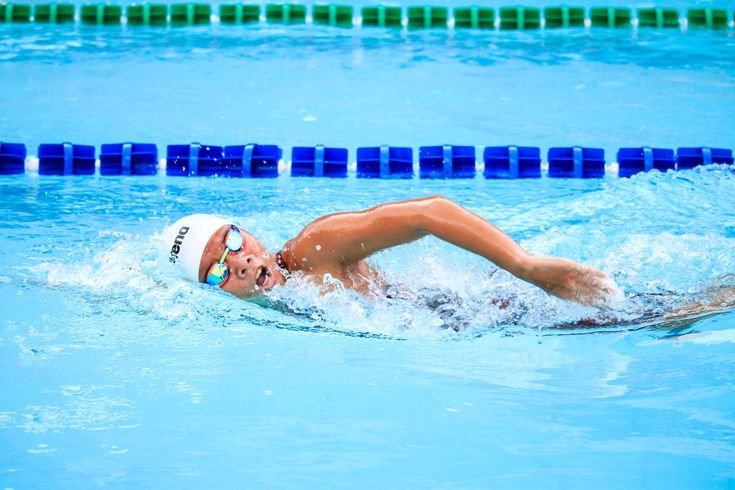
fuente: pinterest
Si eres nuevo en la natación o necesitas refrescar tus conocimientos, aquí tienes una guía paso a paso que te ayudará a comenzar y progresar en tu experiencia de natación:
Paso 1: Sentirse cómodo en el agua
Antes de sumergirse en las profundidades, es fundamental cultivar confianza y comodidad en el agua. Comienza por ponerte de pie en aguas poco profundas para familiarizarte con la sensación del agua alrededor de tu cuerpo. Practica flotar boca arriba y boca abajo, sumergiendo gradualmente la cara y concentrándote en relajarte y controlar la respiración. Esta práctica fundamental no solo desarrolla la conciencia del agua, sino que también desarrolla habilidades esenciales como el control de la flotabilidad y la gestión de la respiración. Sienta una base sólida para progresar a aguas más profundas y aprender técnicas de natación más avanzadas con mayor facilidad y confianza.
Paso 2: Técnicas de flotación y respiración
Dominar la flotación es crucial en la natación, ya que mejora la estabilidad y ahorra energía. Practica flotar boca arriba y boca abajo, con respiraciones lentas y controladas para mantener la flotabilidad. Concéntrate en exhalar suavemente en el agua e inhalar suavemente al girar la cabeza para respirar. Esta técnica no solo mejora tu capacidad para mantenerte a flote, sino que también aumenta la comodidad y la confianza en el agua, preparándote para maniobras y brazadas de natación más avanzadas.
Paso 3: Movimientos básicos de brazos y piernas
Una vez que domines la flotación y la respiración, el siguiente paso es incorporar movimientos de brazos y piernas a tu técnica de natación. Empieza practicando movimientos básicos de brazos, como la brazada de crol. Extiende los brazos hacia adelante, retíralos en el agua con un movimiento continuo y concéntrate en mantener una postura estilizada. A medida que te sientas cómodo con los movimientos de brazos, introduce gradualmente los movimientos de piernas, sincronizándolos con las brazadas de forma coordinada. Esta fase del aprendizaje ayuda a desarrollar la coordinación y la eficiencia general en la natación, sentando las bases para dominar diferentes brazadas y mejorar aún más tus habilidades.
Paso 4: Desarrollar la resistencia y la aguante
A medida que te familiarizas con los movimientos básicos de brazos y piernas, es crucial desarrollar resistencia y aguante en tu rutina de natación. Comienza nadando distancias más cortas y aumenta gradualmente la distancia a medida que mejoras. Incorpora entrenamiento a intervalos en tus sesiones, alternando ritmos de natación más lentos y más rápidos para desafiar tu sistema cardiovascular y desarrollar resistencia. Es fundamental mantener la forma y la técnica correctas durante todo el nado para prevenir la fatiga y minimizar la tensión muscular. Al aumentar gradualmente la distancia de nado e integrar entrenamientos a intervalos, puedes mejorar tu condición física y tu capacidad general de natación de forma eficaz con el tiempo.
Paso 5: Técnicas y ejercicios avanzados
Una vez que hayas desarrollado una base sólida en natación, puedes explorar técnicas y ejercicios avanzados para mejorar aún más tus habilidades. Estos pueden incluir perfeccionar las técnicas de brazada, practicar la respiración bilateral, incorporar volteretas o aprender brazadas avanzadas como la mariposa. Realizar ejercicios específicos para cada estilo de natación puede ayudarte a mejorar tu eficiencia, velocidad y rendimiento general en el agua.
Precauciones y consejos de seguridad
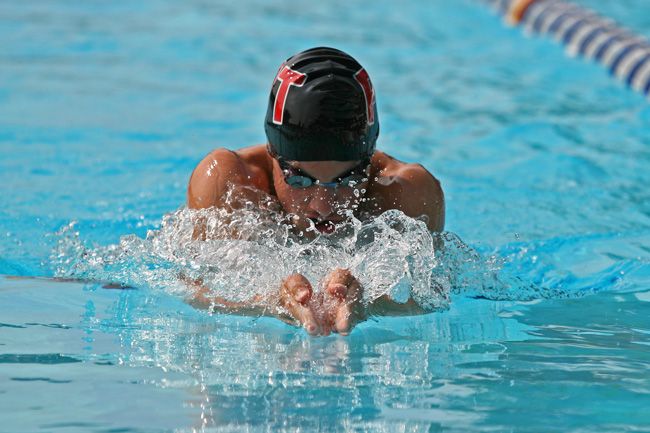
fuente: pinterest
Nadar ofrece innumerables beneficios, pero es fundamental priorizar la seguridad al disfrutar de esta actividad. Aquí tienes algunas precauciones y consejos de seguridad importantes que te ayudarán a nadar con libertad y seguridad:
Importancia de los socorristas
Al nadar en piscinas públicas, playas o aguas abiertas, es fundamental hacerlo siempre en zonas donde haya socorristas. Los socorristas son profesionales capacitados que pueden brindar asistencia inmediata en caso de emergencias, como ahogamientos u otros incidentes relacionados con el agua. Su presencia mejora significativamente la seguridad de los nadadores, ya que monitorean las condiciones del agua y están preparados para realizar rescates si es necesario. Los socorristas también conocen los posibles peligros y pueden ofrecer orientación para prevenir accidentes. Por lo tanto, es importante prestar atención a sus instrucciones y respetar las señales o banderas de advertencia que indiquen condiciones peligrosas en el agua. Nadar en zonas supervisadas por socorristas garantiza una experiencia más segura y placentera para todos.
Nadar en áreas designadas
Nade siempre en zonas de natación designadas, donde las condiciones del agua estén supervisadas y se consideren seguras. Estas zonas suelen estar libres de obstáculos submarinos y posibles peligros, lo que las hace más seguras para nadadores de todos los niveles. Las zonas de natación designadas se inspeccionan periódicamente para garantizar que estén libres de residuos peligrosos y tengan una profundidad de agua estable. Evite nadar en zonas con corrientes fuertes, corrientes de resaca o profundidades desconocidas, ya que pueden suponer un riesgo significativo para su seguridad. Al elegir nadar en zonas designadas, reduce el riesgo de encontrarse con peligros imprevistos y puede disfrutar de una experiencia de natación más segura y relajante.
Protección solar
Nadar al aire libre expone la piel a los dañinos rayos ultravioleta (UV) del sol, que pueden provocar quemaduras solares y daños cutáneos a largo plazo. Para priorizar la protección solar, aplique un protector solar resistente al agua con un FPS alto antes de nadar y reaplíquelo cada pocas horas, especialmente después de estar en el agua. Además, use un sombrero de ala ancha y gafas de sol con protección UV para protegerse la cara y los ojos de la luz solar directa. Busque la sombra durante las horas de mayor sol, generalmente entre las 10 a. m. y las 4 p. m., para minimizar aún más la exposición a los rayos dañinos. Tomando estas precauciones, podrá disfrutar de la natación a la vez que reduce significativamente el riesgo de quemaduras solares y protege su piel de daños.
Hidratación
Nadar puede ser engañosamente agotador, por lo que es esencial mantenerse hidratado durante toda la sesión. Aunque no sienta sed en el agua, puede deshidratarse. Para mantener un nivel adecuado de hidratación, beba agua antes y después de nadar, y considere beber sorbos durante los descansos. Esto ayuda a reponer los líquidos perdidos por el esfuerzo físico y la exposición al sol. Evite consumir bebidas con cafeína o azucaradas, ya que pueden contribuir a la deshidratación. Al priorizar la hidratación, se asegura de que su cuerpo se mantenga con energía y funcional, lo que le permite disfrutar de una experiencia de natación más segura y placentera.
Conclusión
La natación no es solo una actividad recreativa, sino también una forma integral de ejercicio que ofrece numerosos beneficios para la salud. Desde ejercicios cardiovasculares de bajo impacto hasta una mayor flexibilidad y tono muscular, la natación es ideal para personas de todas las edades y niveles de condición física. Al comprender los diferentes estilos de natación, adquirir el equipo adecuado, seguir una guía paso a paso y priorizar las precauciones de seguridad, puedes embarcarte en una aventura de natación que te brindará alegría, bienestar y bienestar. ¿A qué esperas? ¡Anímate y descubre el arte eterno de la natación! Y recuerda, anima siempre a otros a sumergirse en esta gratificante actividad, ya que los beneficios van mucho más allá del agua.
Preguntas frecuentes
1. ¿Cómo nadar más rápido?
Para nadar más rápido, concéntrate en mejorar tu técnica e incorporar el entrenamiento por intervalos a tu rutina de natación. Trabaja en la postura corporal, los movimientos de brazos y piernas, y las técnicas de respiración. Además, practica ejercicios que prioricen la velocidad y la potencia, y aumenta gradualmente la intensidad y la distancia durante las sesiones de entrenamiento.
2. ¿Cómo nadar durante más tiempo?
Para nadar durante más tiempo, aumenta gradualmente tu resistencia incorporando sesiones de natación más largas a tu rutina de entrenamiento. Empieza con distancias más cortas y aumenta la distancia gradualmente. Implementa entrenamiento por intervalos para mejorar la resistencia cardiovascular. Concéntrate en mantener la técnica adecuada y en controlar tu ritmo para conservar energía durante la natación.
3. ¿Cómo utilizar una tabla de natación?
Para usar una tabla de nado, sostenla frente a ti con ambas manos, apoyando los brazos en el borde superior. Patea con las piernas manteniendo el cuerpo y la cabeza alineados, y mantén un ritmo constante. Las tablas de nado son ideales para aislar la parte inferior del cuerpo y mejorar la fuerza y la resistencia de las piernas. Úsalas para ejercicios de patadas o como una herramienta para descansar la parte superior del cuerpo mientras te concentras en el trabajo de piernas.
4. ¿Qué debe comer un nadador?
La dieta de un nadador debe consistir en una combinación equilibrada de carbohidratos, proteínas y grasas saludables. Los carbohidratos aportan energía y deben consumirse antes y después de nadar. Algunos ejemplos son los cereales integrales, las frutas y las verduras. Las proteínas de alta calidad, como las carnes magras, el pescado, los huevos y las legumbres, favorecen la reparación y la recuperación muscular. Las grasas saludables procedentes de fuentes como el aguacate, los frutos secos y las semillas son esenciales para el buen funcionamiento del organismo y deben consumirse con moderación.
5. ¿Cómo nadar sin taparse la nariz?
Para nadar sin taparse la nariz, practique una técnica de respiración adecuada y controle la nariz. Concéntrese en exhalar por la nariz mientras está bajo el agua e inhalar por la boca al girar la cabeza para respirar. Con la práctica, su cuerpo se adaptará de forma natural a respirar eficientemente mientras nada, eliminando la necesidad de taparse la nariz.
6. ¿Qué quema más calorías, correr o nadar?
La natación suele quemar más calorías que correr. La resistencia del agua obliga a los músculos a trabajar más, lo que resulta en un mayor gasto calórico. La cantidad exacta de calorías quemadas varía según factores como la intensidad, la duración, el peso corporal y el estilo de natación específico. Generalmente, la natación involucra más grupos musculares simultáneamente que correr, lo que la convierte en un entrenamiento eficaz para todo el cuerpo que puede ayudar a mejorar la condición cardiovascular y el tono muscular.
